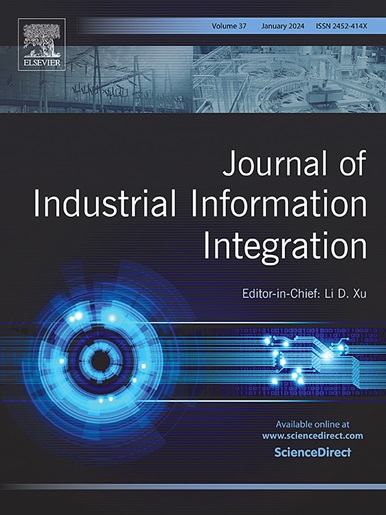基于OPC ua的聚合微电网三层架构,集成边缘云计算和IEC 62264
IF 10.4
1区 计算机科学
Q1 COMPUTER SCIENCE, INTERDISCIPLINARY APPLICATIONS
引用次数: 0
摘要
本文提出了一种基于开放平台通信统一架构(OPC UA)的三层架构,以解决聚合微电网系统中的互操作性挑战,包括协议异构和延迟不匹配。为了满足高阶(每小时BESS调度)和低阶(实时BESS调整)两种关键能源管理策略的延迟需求,该架构将通信划分为微网聚合层、通信平台层和分布式微网层。通过利用OPC UA平台、现场总线协议、边缘云计算和IEC 62264标准,该架构实现了无缝和可扩展的数据交换,同时确保了与异构设备的兼容性,并支持灵活的操作。与IEC 61850相比,OPC UA提供了更广泛的互操作性、动态语义建模、无缝的OT/IT集成以及基于TLS/ aes256的强大安全性,使其非常适合安全的云集成微电网。此外,基于OPC ua的通信通过动态信息模型进行操作。这些模型使微电网生态系统中的设备数据结构变得灵活和自适应。本文还定义了专门为微电网环境设计的云和微电网组件信息模型。这些动态模型支持选择性数据更新和信息分层结构,减少不必要的网络流量并提高整个体系结构的响应能力。在实际测试平台上的验证表明,延迟减少了17.86倍,符合工业4.0基准,突出了该架构在实现可扩展、实时微电网管理方面的有效性,并为实际能源系统奠定了坚实的基础。本文章由计算机程序翻译,如有差异,请以英文原文为准。
OPC UA-based three-layer architecture for aggregated microgrids integrating edge cloud computing and IEC 62264
This paper presents a three-layer architecture based on Open Platform Communications Unified Architecture (OPC UA) to address interoperability challenges in aggregated microgrid systems, including protocol heterogeneity and latency mismatches. Designed to meet the latency requirements of two key energy management strategies — high-step (hourly BESS scheduling) and low-step (real-time BESS adjustments) — the architecture segments communication into the Microgrid Aggregation Layer, Communication Platform Layer, and Distributed Microgrid Layer. The proposed architecture achieves seamless and scalable data exchange while ensuring compatibility with heterogeneous devices and supporting flexible operations by leveraging the OPC UA platform, Fieldbus protocols, edge cloud computing, and IEC 62264 standards. Compared to IEC 61850, OPC UA offers broader interoperability, dynamic semantic modeling, seamless OT/IT integration, and robust TLS/AES256-based security, making it well-suited for secure cloud-integrated microgrids. Additionally, OPC UA-based communication operates through dynamic information models. These models enable flexible and adaptive structuring of device data in the microgrid ecosystem. This paper also defines Cloud and Microgrid Component Information Models, specifically designed for microgrid environments. These dynamic models enable selective data updates and hierarchical structuring of information, reducing unnecessary network traffic and improving responsiveness across the architecture. Validation on a real-world testbed demonstrates up to 17.86-fold latency reduction and compliance with Industry 4.0 benchmarks, highlighting the effectiveness of the architecture in enabling scalable, real-time microgrid management and establishing a robust foundation for practical energy systems.
求助全文
通过发布文献求助,成功后即可免费获取论文全文。
去求助
来源期刊

Journal of Industrial Information Integration
Decision Sciences-Information Systems and Management
CiteScore
22.30
自引率
13.40%
发文量
100
期刊介绍:
The Journal of Industrial Information Integration focuses on the industry's transition towards industrial integration and informatization, covering not only hardware and software but also information integration. It serves as a platform for promoting advances in industrial information integration, addressing challenges, issues, and solutions in an interdisciplinary forum for researchers, practitioners, and policy makers.
The Journal of Industrial Information Integration welcomes papers on foundational, technical, and practical aspects of industrial information integration, emphasizing the complex and cross-disciplinary topics that arise in industrial integration. Techniques from mathematical science, computer science, computer engineering, electrical and electronic engineering, manufacturing engineering, and engineering management are crucial in this context.
 求助内容:
求助内容: 应助结果提醒方式:
应助结果提醒方式:


